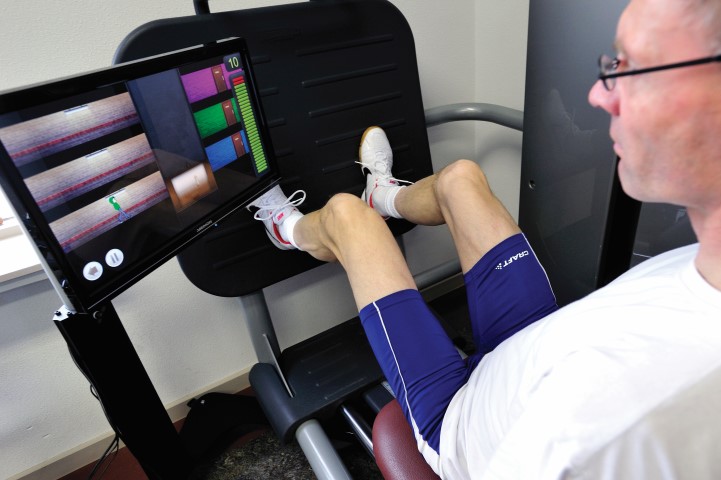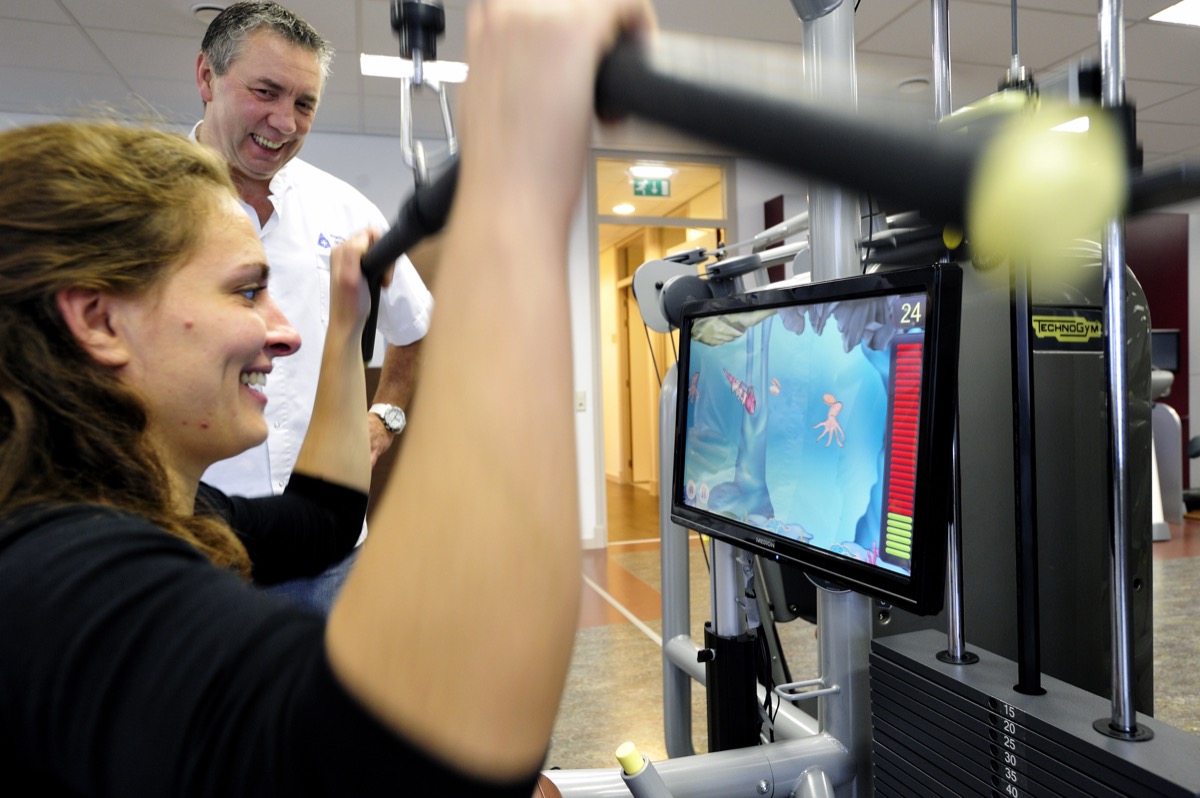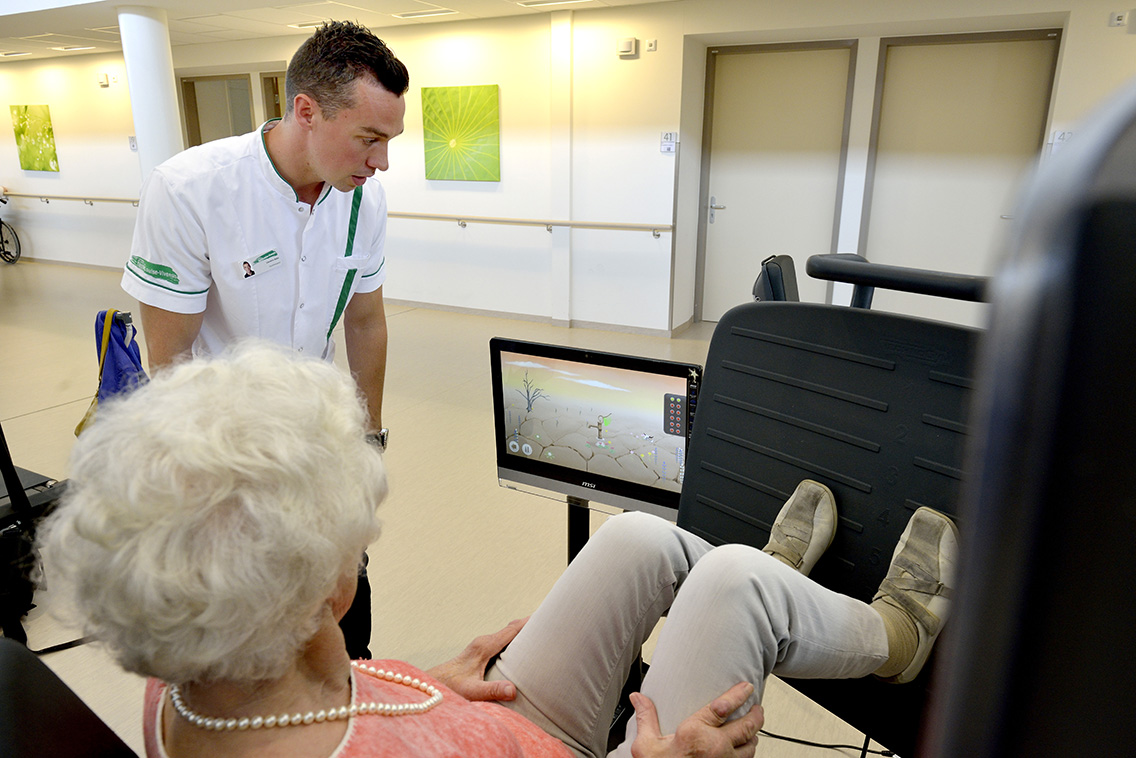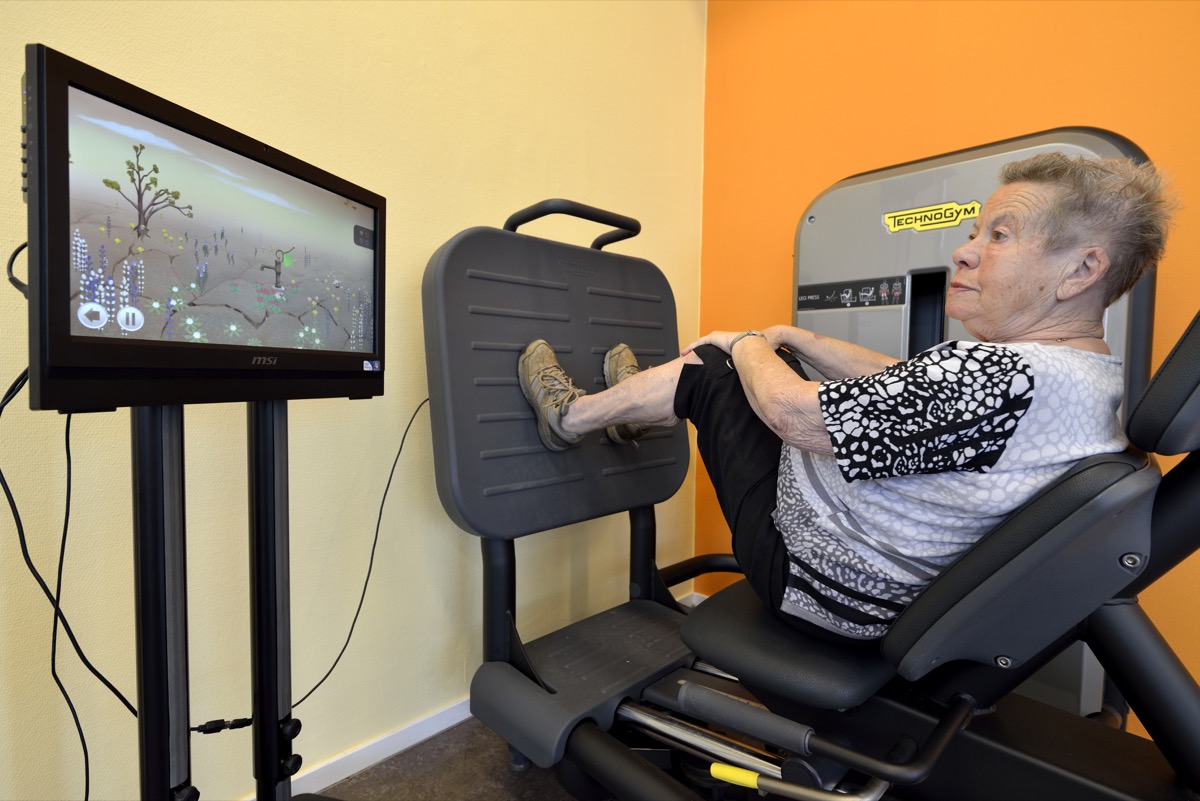Evidence based
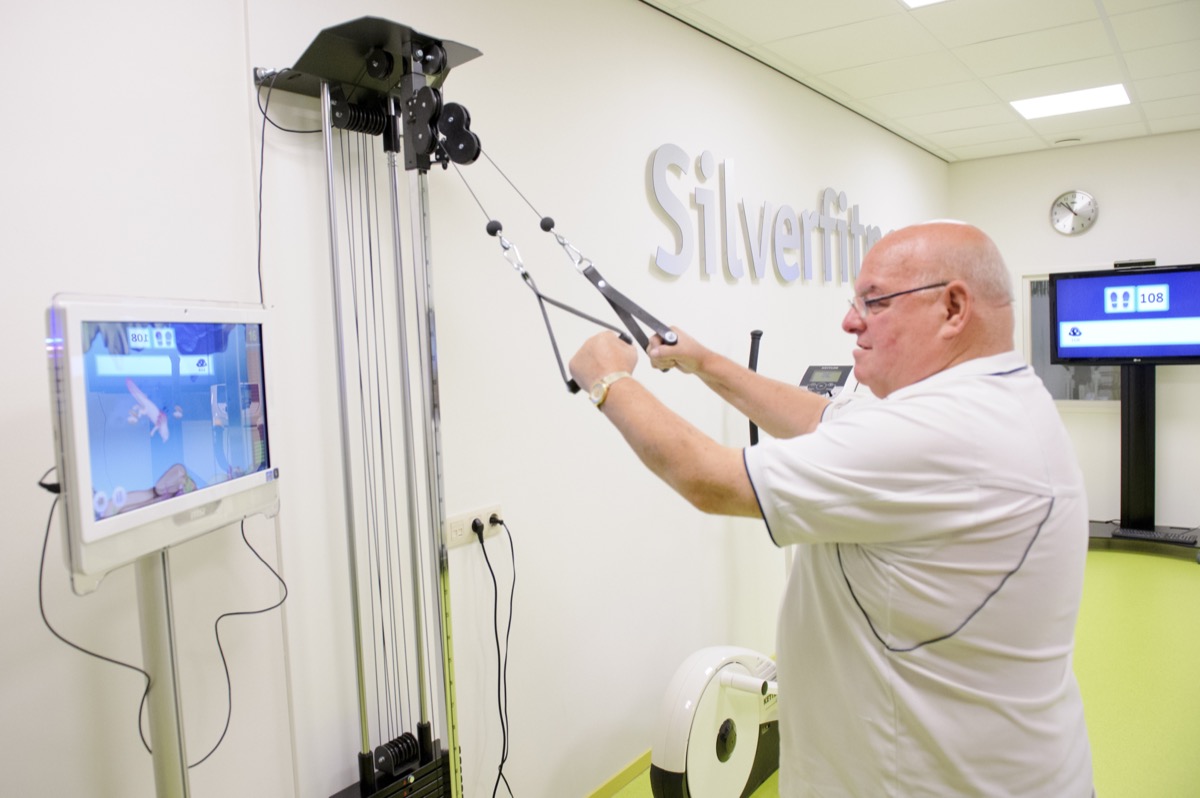
Strength training is essential to remain independent
When older people do not actively use their muscles, they have a greater chance of being admitted to a hospital or nursing home (Sagiv, 2009). Strength training is therefore seen as an essential part of training programs for frail older people (Izquierdo et al., 2017). Sarcopenia is directly associated with a low functional capacity, such as standing up independently from a chair and performing personal care (Janssen et al., 2002). A decrease in functional capacity is again related to an increased fall risk, decreased independence and deteriorated quality of life (Trombetti et al., 2016).
Improvement of muscle strength and muscle mass
Lopez et al. (2018) concluded from a systematic review that strength training alone, or in combination with other training components, results in an increase in muscle mass, an improvement in muscle quality and an increase in muscle strength in frail elderly. Strength training can therefore be seen as an effective intervention for improving age-related muscle weakness.
Improvement of functional mobility
Strength training can make an important contribution to improving the functional mobility of the elderly. Papa et al. (2017) show on the basis of a systematic review that strength training shows, among other things, an improvement in standing up independently from a chair, moving forward, walking speed and making turns while walking. Various studies also show an improvement in the static and dynamic balance (Gonzalez et al., 2014; Kahle et al. 2014; Granacher et al., 2009).
There are also positive effects on low intensity
Sahin et al. (2018) have conducted research into the influence of intensity on the effectiveness of strength training in frail older people. Both the low intensity group and the high intensity group showed improvements in physical and psychological functions. The control group, which did not train, just declined. It can therefore be concluded that strength training, even at low intensity, has important positive effects.
Exercises in game form ensure a high intrinsic motivation
According to the guidelines of the World Health Organization, elderly people should perform strength training at least twice a week (who, 2011). More than 85% of people over the age of 60 do not comply with this guideline (Burton et al., 2017). They are more likely to participate in an activity more often if they are intrinsically motivated (Marcos-Pardo et al., 2018). Van Oudheusden (2013) showed that intrinsic motivation is high when training exercises are used during training.
Strength training appears to be safe intervention
Several studies have looked at the safety aspects of strength training and conclude that strength training is a safe intervention for vulnerable elderly people. During the intervention in the study by Sahin et al. (2018), there were no negative events. This supports the idea that strength training is safe and effective for frail older people. Sparling et al. (1990) measured the blood pressure values of the elderly at the beginning, during and at the end of a strength training session. This revealed no increased risk. During an intensive strength training program for elderly people between the ages of 90 and 99 in the study by Fiatarone et al. (1990), no cardiovascular complications arose, not even among the participants with a cardiovascular disease. Pyka et al. (1994) looked at possible injuries during a high-intensity strength training program for the elderly. These did not occur in their studies.
Literature
van Abbema, R., de Vries, NM, Weening-Dijksterhuis, B., de Greef, M., & Hobbelen, H. (2015). kngf standard: exercise intervention vulnerable elderly. Royal Dutch Society for Physiotherapy (KNGF). Burton, E., Hill, AM, Pettigrew, S., Lewin, G., Bainbridge, L.,
Farrier, K., ... Hill, KD (2017). Why do seniors leave residency training programs? Clinical Interventions in Aging, 12, 585-592.
Fiatarone, M., Marks, E., Ryan, N., Meredith, C., Lipsintz, L., & Evans, W. (1990). High-intensity strength training in no-nagenarians. Journal of the American Medical Association, 263 (22), 3029-3034.
Gonzalez, AM, Mangine, GT, Fragala, MS, Stout, JR, Beyer, KS, Bohner, JD, ... Hoffman, JR (2014). Resistance training improves single leg performance in older adults. Aging Clinical Experimental Research, 26 (1), 89-92.
Granacher, U., Gruber, M., & Gollhofer, A. (2009). Resistance training and neuromuscular performance in seniors. International Journal of Sports Medicine, 30 (9), 652-657.
Izquierdo, M., Casas-Herrero, A., Martinez-Velilla, N., Alonso-Bouzon, C., & Rodriguez-Manas, L. (2017). An example of cooperation for implementing programs associated with the promotion of exercise in the frail elderly. European Erasmus + <> program.
Revista Española de Geriatría and Gerontología, 52, 110-111.
Janssen, I., Heymsfield, SB, & Ross, R. (2002). Low relative skeletal muscle mass (sarcopenia) in older persons is associated with functional impairment and physical disability. Journal of the American Geriatrics Society, 50 (5), 889-896.
Kahle, N., & Tevald, MA (2014). Core muscle strengthening improvement or balance performance in community-dwelling older adults: a pilot study. Journal of Aging and Physical Activity, 22 (1), 65-73.
Lopez, P., Pinto, RS, Radaelli, R., Rech, A., Grazioloi, R., Izquierdo, M., & Cadore, EL (2018). Benefits of Resistance Training in physically frail elderly: a systematic review. Aging Clinical and Experimental Research, 30, 889-899.
Marcos-Pardo, PJ, Martinez-Rodriguez, A., & Gil-Arias, A. (2018). Impact of a motivational resistance training program on adherence and body composition
in the elderly. Science Reports, 8 (1370).
Van Oudheusden, P. (2013). Virtual reality in the elderly rehabilitation (Unpublished Master's thesis). University of Applied Sciences Leiden.
Papa, EV, Dong X., & Hassan, M. (2017). Resistance training for activity limitations in older adults with skeletal muscle function deficits: a systematic review. Clinical Interventions in Aging, 12: 955-961.
Pyka, G., Lindenberger, E., Charette, S., & Marcus, R. (1994). Muscle strength and fiber adaptations to a year-long resistance training program in elderly men and women. Journals of Gerontology, 49 (1), m22-m27.
Sagiv, M. (2009). Safety of resistance training in the elderly. European Review of Aging and Physical Activity, 6, 1-2.
Sahin, UK, Kirdi, N., Bozoglu, E., Meric, A., Buyukturan, G., Ozturk, A., & Doruk, H. (2018). Effect of low-intensity versus high-intensity resistance training on the functioning of the institutionalized frail elderly. International Journal of Rehabilitation Research, 41, 211-217.
Sparling, PB, Cantwell, JD, Dolan, CM, & Niederman, RK (1990). Strength training in a cardiac rehabilitation program: a six-month follow-up. Archives of Physical Medicine and Rehabilitation, 71 (2), 148-152.
Trombetti, A., Reid, KF, Hars, M., Herrmann, FR, Pasha, E., Phillips, EM, & Fielding, RA (2016). Age-associated declines in muscle mass, strength, power, and physical performance: impact on fear of falling and quality of life. Osteoporosis International, 27 (2), 463-471.
World Health Organization (2011). Global Recommendations on Physical Activity for Health.
 Nederlands
Nederlands  English
English  Français
Français  Deutsch
Deutsch 
